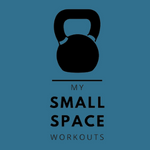
If you suffer from Cubital Tunnel Syndrome then you may be wondering whether it’s safe to continue to lift weights. We’ll answer that question as well as showing you things you can do now to maintain your muscle mass while you seek treatment and recover from this painful condition.
DISCLAIMER: The advice given in this article does not constitute medical advice and before continuing with, or embarking upon a fitness regime, you should discuss the contents of the article with your healthcare provider if you have been diagnosed with, or suspect that you have Cubital Tunnel Syndrome.
What is Cubital Tunnel Syndrome?
For those of you who don’t know what Cubital Tunnel Syndrome is it is a common peripheral nerve compression syndrome which causes numbness and tingling in the fingers.
Have you ever hit your elbow and been left with an agonizing tingling sensation (commonly called pins and needles here in the UK) radiating from your elbow and down into your hands? Well, its the ulnar nerve that causes this unpleasant feeling and the impingement of this nerve which causes these sensations.
In addition to the tingling sensations, Cubital Tunnel Syndrome commonly causes numbness and pain along
the outermost two fingers (ring and little finger).
Sufferers also experience weakness of the hand and in some severe cases the clawing or curling up of the ring and little fingers.
As you can imagine, constant pins and needles and weakness in the elbow, forearm and hand may make lifting weights uncomfortable or even impossible.
So let’s look at what sufferers can do to maintain – or even build – muscle mass despite the pain of this unpleasant syndrome.
Can I Still Lift Weights With Cubital Tunnel Syndrome?
The short answer here is maybe, which admittedly isn’t helpful right now.
The reason for that is there are so many variables. Some people can manage milder bouts of these conditions and lift with certain modifications to troublesome exercises while others will have to step away from the weights for a while.
Those with severe nerve damage however, may have to stop certain weight lifting exercises completely and permanently.
But that will only be in extreme cases, so it is worthwhile thinking about an effective recovery plan where you can employ home remedies, modify your workouts, and hopefully see improvements.
Bottom line: lifting weights with Cubital Tunnel Syndrome isn’t impossible.
Home Remedies For Cubital Tunnel Syndrome.
The best place to start on the road to recovery is not in the gym. That comes later.
First, focus on known remedies that are understood to lessen the impact of Cubital Tunnel Syndrome.
Commonly cited remedies for the condition include the following:
1) applying ice to the area to deal with any swelling and pain;
2) getting a splint or other compression aid to hold the arm in the right position and restrict movement;
3) making sure to rest the arm with a pillow under the elbow;
4) avoiding activities that worsen the symptoms;
5) avoiding leaning on your elbow for prolonged periods;
6) increasing consumption of healthy foods that combat inflammation.
Rest is always a good idea with any condition to give the injury time to recover and avoid worsening things unnecessarily.
The therapy tools in the list above are perfect as a combination.
Splints are great for daily wear as you should still be able to go about general tasks without too much discomfort.
The pillow idea is worth a shot while relaxing or perhaps while at a desk at work. A big problem with rehabbing Cubital Tunnel Syndrome is that you don’t want to hold the arm in the same bent position for too long or overextend the elbow. So, remember to keep it moving gently throughout the day.
Lifting Weights With Cubital Tunnel Syndrome
That last piece of advice about avoiding activity is probably the last thing you want to hear and is sure to give a lot of you cause for concern.
But, don’t lose hope just yet.
You don’t necessarily need to give up working out with weights completely. You might be fine if you can balance appropriate home treatments with modifications to your routine. This can include the following:
1) Decreasing the weight you use in your lifts;
2) Modifying your technique to avoid worsening the condition;
3) Reducing your time spent working out;
4) Making a point to avoid heavy lifting outside of the gym;
There are two approaches when it comes to avoiding activity that can aggravate the problem.
Let’s start with your time in the weight room. If you really can’t stand the idea of stepping back for a few weeks, you should modify the amount you lift to remove some of the pressure on the affected arm.
You can also try to make sure not to make any exaggerated movements that may hyper extend the elbow and trigger the nerve. Consider tricep extensions (if these aren’t too painful to attempt in the first place): instead of locking out, keep some flex in the elbow before returning to the starting position.
Finally, you can also try to refrain from holding the weight with a bent arm for longer than you need to. These changes may not be ideal, but they are a good compromise.
In a nutshell, we advocate using light weights, lifted at a slow or super-slow pace and avoiding locking out on all movements that use the elbow.
Away from the gym, you can focus on reducing physical activity to balance things out.
For example, lifting heavy bags of groceries into the house isn’t a great idea. Instead, try smaller, evenly loaded bags over more trips.
Try to be aware of how much strain you put on your arm during day-to-life and ask for help where needed.
If you can’t avoid it all, make sure you have the splint on and that you can rest and apply the ice packs as needed.
Try These Fitness Substitutions
So if you’re reading this article and leaning towards a temporary or permanent break from the weights, then don’t be too downhearted.
Here are some ideas that will help you work on your fitness while recovering:
Stretching program
How many times have you promised yourself that you will address your lack of flexibility and poor posture, only to slip back into your bad habits?
Well, now is the perfect time to finally focus on your flexibility and make some real progress.
The best way is to sign up to a stretching course and STICK to it!
Here are two that I have reviewed recently, but out of them both, I’d say the 2nd option is going to be most suitable for you:
1. Metabolic Stretching – Read the full review
2. Hyperbolic Stretching – Read the full review and see my 30 day progress pictures!
Walking & Jogging
Never underestimate the benefits of walking. A simple 45-minute walk every day is a great foundation for health.
If you’re up to it, then go ahead and start jogging. There’s no reason why you can’t use this time of rehabilitation to make great advances in other areas of fitness, that you’ve previously neglected.
If you’re new to jogging, I highly recommend the couch to 5k program – it’s makes building up to a 5k run a breeze!
And once you start making improvements to your cardiovascular health, you’ll love beating your 5k times each week.
It can become seriously addictive.
Bodyweight Leg Workouts
We’re talking lunges and squats.
Again, what you may sacrifice in terms of weight lifted, you can make up for in volume and if there’s one thing that legs respond to – it’s volume.
And you may find that even with Cubital Tunnel Syndrome, you’re able to use hold some light-to-moderately-weighted dumbbells in each hand as you perform these exercises.
So while you dial down upper body training, why not up the ante with your lower body efforts.
You could even throw in some plyometrics and incorporate some jump training to add further variety and keep yourself interested.
Functional Trainer Machines
If you’ve visited this website before, you may know that I have a deep love for the functional trainer machine.
I believe that they are uniquely placed to provide an effective workaround for those suffering with Cubital Tunnel Syndrome because of one key feature.
They will allow you to grip the D handles lightly in your hand and rotate your wrist to find the most comfortable position to push / pull against.
Every movement performed on a functional trainer benefits from constant tension, meaning that you can dial down the amount of weight and really isolate the muscle you’re focusing on, preventing an over-loading on the joints.
Finally, if you find yourself in pain, you can drop the handles and the weight stack will drop onto the loading plate / springs: no damage to you, your floor or the weights. Ideal.
Yes, they are expensive, but a functional trainer could be your key to maintaining some muscle mass while you rehabilitate.
As you can see, your fitness journey doesn’t end just because of Cubital Tunnel Syndrome. In fact, there’s no reason why you can’t improve your fitness in new, significant areas.
What To Do If The Sensation Gets Worse.
This is where we need to be honest.
You can’t go into this new regime of recovery and exercise assuming that all will be well.
There is a risk that you might exacerbate symptoms and put your recovery time back a little bit. If that happens, there is no point in toughing things out or ignoring the issue.
Admit that the condition is a bigger deal and progress to one or more of these options as applicable.
a) Remove weight lifting completely from your workouts.
b) Switch to alternative exercises to rehab the condition.
c) Consult a doctor if things don’t improve.
As we discussed in the section above, removing weight lifting for two weeks doesn’t mean that you can’t direct your energy and focus into something else.
Treadmill work and other leg exercises aren’t a bad idea if you need to let go of any frustrations. Avoid machines where you need to use your arm too much.
At the same time, you can try out some of the rehab exercises, such as these nerve “glide” exercises.
They sound weird on paper but can be very effective.
If problems persist, or you’re not sure you are doing the rehab exercises correctly, then it is definitely a good idea to seek medical advice.
Your doctor may simply put you on some pain medication and advice using a splint. But, they might also refer you for physical therapy or further evaluation.
The worst-case scenario is surgery for a more permanent fix if things don’t improve. While surgery isn’t anything anybody wants to deal with, the short-term inconveniences of recovery could be well worth it if you end up cured or substantially better than you were before the surgery.
How Long Does Cubital Tunnel Syndrome Last?
Time frames differ between cases.
It can all depend on the severity of the condition to begin with, the factors that might impede recovery, and how you manage the condition.
In some cases, it could be a matter of weeks with the right exercises and treatment until you can comfortably lift again. In others, you may find that you continue to get symptoms over time.
If you do require surgery, that wait time will increase.
Be patient, follow doctor’s orders, and most importantly, find alternative ways to keep healthy: both in body and mind.
Putting it all Together
So there you have it, your complete guide to lifting weights with Cubital Tunnel Syndrome. We’ve faced up to the reality that your lifting goals are more than likely going to have to be put on hold for a while, but we’ve also looked at how you can use this time to work on previously neglected areas of your fitness.
If you take one thing away from this article, may it be hope.
OK, so your fitness regime may look different in the future than you ever thought it would, but there’s no reason why you can’t look forward to a healthy, fit future.
Let me know in the comments if you’ve found this article useful, or if you suffer from Cubital Tunnal Syndrome and have managed to find effective ways to workout around your condition.


